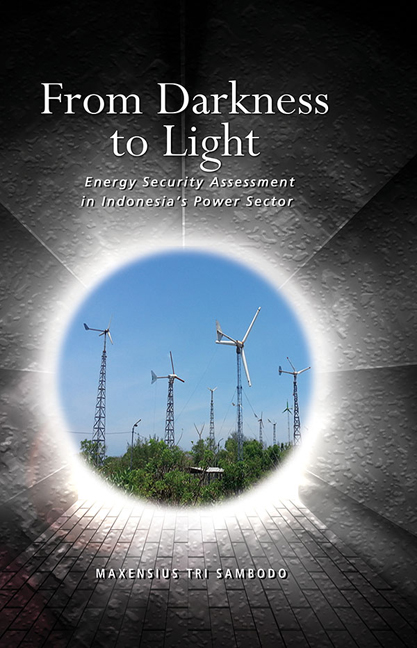Book contents
- Frontmatter
- Dedication
- Contents
- List of Tables
- List of Figures
- List of Abbreviations
- Acknowledgements
- 1 Introduction
- 2 A Historical Overview of the Electricity Sector
- 3 Electricity Production and Consumption: Boom and Bust
- 4 Economic Crisis and Its Impact on the Power Sector
- 5 Electricity and Economic Growth
- 6 Electricity and the Environment
- 7 The Rural Electricity Programme in Indonesia
- 8 Conclusion
- Index
- About the Author
4 - Economic Crisis and Its Impact on the Power Sector
Published online by Cambridge University Press: 05 July 2016
- Frontmatter
- Dedication
- Contents
- List of Tables
- List of Figures
- List of Abbreviations
- Acknowledgements
- 1 Introduction
- 2 A Historical Overview of the Electricity Sector
- 3 Electricity Production and Consumption: Boom and Bust
- 4 Economic Crisis and Its Impact on the Power Sector
- 5 Electricity and Economic Growth
- 6 Electricity and the Environment
- 7 The Rural Electricity Programme in Indonesia
- 8 Conclusion
- Index
- About the Author
Summary
Chapter 3 indicated that between 1969 and before the economic crisis in 1997/98, the electricity sector in Indonesia grew healthily in terms of production, consumption, and efficiency (declining in transmission and distribution losses). This period can be considered as the period with the best performance of the electricy sector after independence. However, the rapid development of the power sector was not based on strong foundations of good governance and good corporate governance. As a result, after the economic crisis in 1997/98, the power sector was under critical conditions with poor performance and a lack of investment. This chapter highlights that PLN still needs to resolve the financial problem due to pricing and exchange rate policy. Mishandling of the situation and inappropriate strategies to overcome the challenges will lead to more problems in the power sector in the future.
Indonesia experienced two major economic crises in the mid-1960s and late 1990s. The two crises led to deep economic contractions. Economic growth was –3.0 Percent in 1963 and –13.1 Percent in 1998; the two crises increased the number of poor people in absolute terms (Thee 2012). The origins of the two crises were different. The economic crisis in the mid-1960s was due to a mismanagement of the domestic economy while that in the late 1990s was due to the creditor and investor panic that began in Thailand in mid-1997 and spread to other Asian countries such as Malaysia, the Philippines, and Indonesia (Thee 2012). The two crises led to a serious political predicament which resulted in the downfall of the first and second Indonesian presidents. Thee (2012) also noted the major differences between the two crises: the mid-1960s crisis was preceded by a steady economic decline during the previous five or six years, while the crisis in the late 1990s was preceded by three decades of rapid and sustained economic growth.
As seen in the previous chapter, the 1997/98 economic crisis caused a substantial decline in the growth of sold electricity and most of the decreases were from the industrial sector. This indicates that the industrial sector was hit more severely than the other sectors. Even though the electricity consumption from the industrial sector rapidly increased after the crisis, the consumption from the household sector increased much faster than that of the industrial sector.
- Type
- Chapter
- Information
- From Darkness to LightEnergy Security Assessment in Indonesia's Power Sector, pp. 72 - 93Publisher: ISEAS–Yusof Ishak InstitutePrint publication year: 2016



